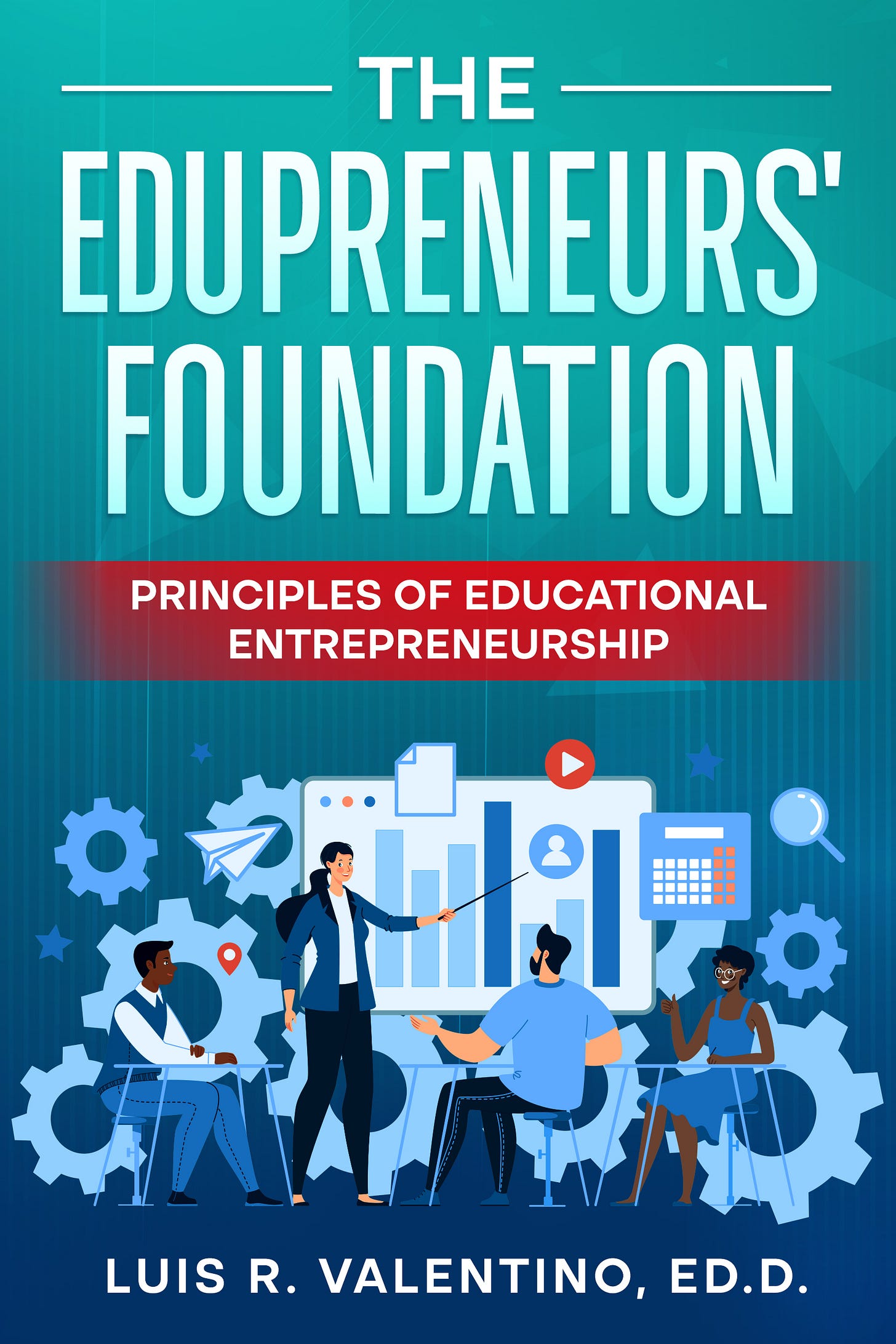Introduction
Do you know that feeling when you're ready for something new but unsure how to make the change? That's precisely where Alyssa found herself while teaching fourth grade. "I loved teaching, but I knew there was more I could do with my skills," she shared on the Classroom to Boardroom podcast. Alyssa spent time reflecting on the assets she developed as a classroom teacher. She realized that her expertise was in educational technology. Today, she's thriving in EdTech sales, using the skills that made her an effective teacher.
Starting something new in education isn't easy. With about 60% of EdTech startups hitting roadblocks, you might wonder what differentiates success from failure. When deciding what niche I would carve for myself after my career in education, I had to do a lot of processing. As part of my research, I read stories from other edupreneurs, including Melanie Perkins, whose journey from teaching design students to building Canva offered eye-opening lessons about tackling education innovation. These lessons provided great insight into what I needed to do, and I would like to share them with you.
Picture this: A young tutor watching her graphic design students struggle with overly complex software. Instead of just sympathizing, Perkins saw an opportunity. "The future of design would be entirely different," she believed, "online, simple, collaborative, and accessible to everyone." Her vision wasn't just about making pretty designs but about breaking down barriers to learning and creativity.
But here's where it gets real. Perkins didn't just walk into success. She faced over 100 investor rejections – the setback that makes most people question everything. Her response? "If you get your foot in the door just a tiny bit, you have to wedge it in." This stubborn optimism isn't just inspiring; it's practically necessary in today's tough EdTech landscape.
The Current Education Startup Scene
Today's education entrepreneurs face some serious hurdles. The market's crowded, especially since everyone jumped into online learning during the pandemic. Getting funding isn't as easy as it used to be – investors want to see clear paths to making money, not just good intentions. Add in complex regulations about data privacy and screen time, and you've got yourself quite a challenge.
But Perkins' approach offers some innovative strategies for navigating these waters:
Take Your Time with the Foundation: "Those two years were probably the least fun, but they set the groundwork for everything I can do today," Perkins shared about Canva's early development. In education, rushing to market can backfire spectacularly. It is better to build something solid than something quick.
Build a Dream Team. She didn't mess around when Perkins finally got her foot in the door. She brought in Lars Rasmussen from Google – because sometimes you need to aim high when building your team. In education, where both teaching expertise and tech skills matter, having the right people can make or break your project.
Think Bigger Than Your Product: Perkins and her co-founder pledged 1% of their profits to good causes. This wasn't just nice PR – it showed they understood that education is about impact, not just income. Today's successful edupreneurs often find this balance between business success and social impact.
Practical Tips for Education Innovators Looking at today's education landscape, here's what works:
Looking Ahead
The future of education entrepreneurship isn't just about fancy technology – it's about solving real problems for real people. As Perkins puts it, "We want to empower every person to design everything with every ingredient in every language on every device." That's the kind of ambitious thinking education needs.
But here's the thing: success in education innovation isn't just about having a great idea. It's about persistence when things get tough, smart team building, and understanding what teachers and students need. It's about finding that sweet spot between making a difference and making it work as a business.
For anyone considering jumping into educational entrepreneurship, Perkins' story shows rejection isn't the end – it's often just the beginning. The education world needs fresh thinking and new solutions. The challenges are real, from tight school budgets to complex regulations, but so are the opportunities to make a difference.
The most successful education entrepreneurs share something important: They don't just build products—they solve problems. They listen to their users, adapt when things aren't working, and keep pushing forward even when it gets tough. Ultimately, this differentiates between another failed startup and something that truly changes how people learn.
Reflection Questions:
What problem in education keeps you up at night, and how might you solve it?
When you hit roadblocks (like Melanie's 100+ rejections), what keeps you going?
How do you balance making money with making a difference in education?
What's your unique story, and how can it connect with teachers and students?
Which parts of your education solution need more work to help your users?
Practical Tasks:
Story Mining
Write down three moments from your teaching or learning experience that shaped your mission
Ask your early users to share their honest feedback about your product
Record a short video explaining why you started your education venture
Community Building
Start a small group where users can share tips and support each other
Plan one live event (even if it's virtual) to connect with your community
Create a simple way for users to share their success stories
Marketing with Heart
Pick one social media platform where your target users hang out
Share behind-the-scenes glimpses of how you're building your solution
Test different ways to explain your product in plain, simple language
Growth Planning
List three small wins you can achieve in the next month
Find one mentor who's been where you want to go
Map out your next significant milestone and the steps to get there
The Pulse
President Trump's administration has proposed significant changes to federal influence on schools through funding and policy. The administration has consistently sought to reduce the U.S. Department of Education's budget. The first blueprint, released in March 2017, proposed a $9 billion cut, targeting programs like after-school initiatives and teacher training. In his new administration, he continues working to dismantle the Department of Education, though these efforts have not gained significant traction in Congress. Learn more and watch How K-12 Companies Should Navigate Uncertainty During the Trump Administration.
Book
LEARN • IGNITE • INNOVATE
In the nexus of education and entrepreneurship lies a brilliant gem known as edupreneurship—a fusion that ignites the transformative power of learning with the dynamism of business. At the heart of this movement is an alchemy that has begun to reshape how knowledge is delivered, consumed, and valued. As we unwrap the layers of edupreneurship's emergence, we understand its pivotal role in revolutionizing educational paradigms. Once just a mirror reflecting the status quo, education now stands poised at the cusp of innovation, with edupreneurs propelling an era where teaching transcends the bounds of traditional classrooms and learning becomes a lifelong journey of discovery.
While the history of edupreneurship is embroidered with trials, it is rich with triumphs that illustrate a clear trajectory: transformative change is not only possible but palpable. This landscape is ripe with potential for those daring to leave indelible marks upon the canvas of education. Embracing edupreneurship doesn’t just open doors—it creates new realms of possibility where the currency is creativity, the investment is intellect, and the returns are incalculable.








